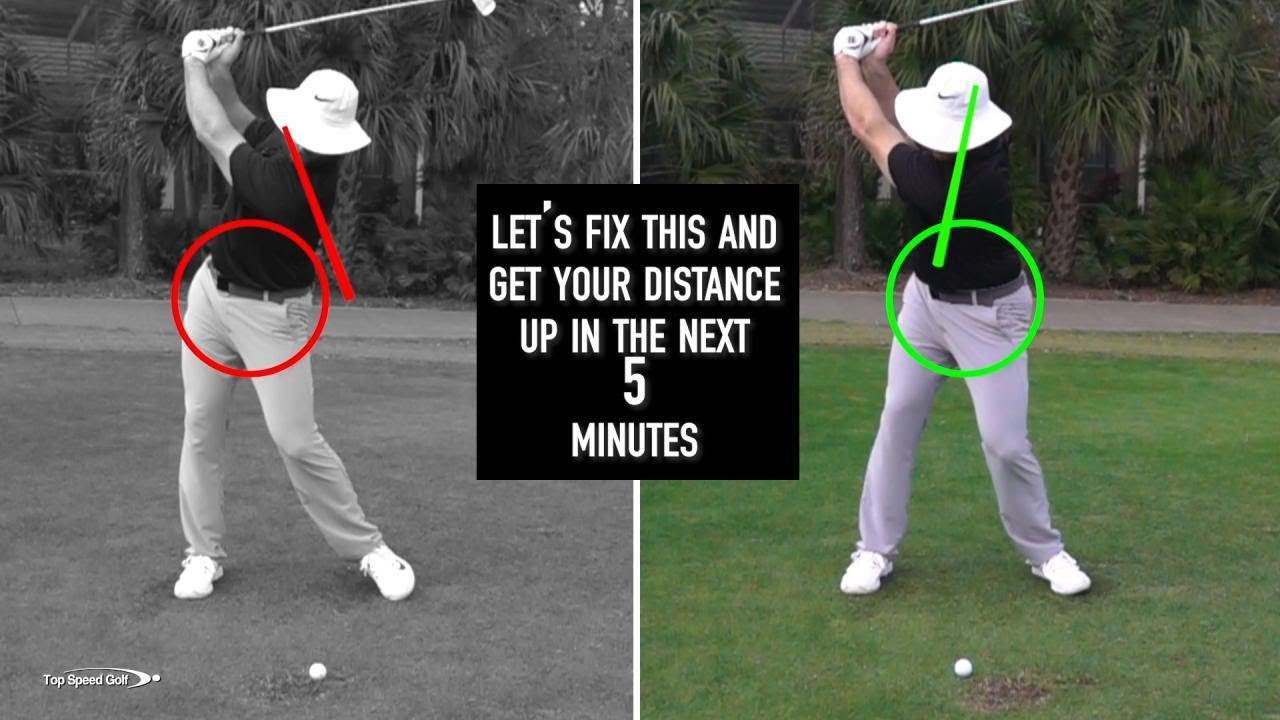
Unlock the secret to a powerful golf swing by banishing the sway that hinders your game. Our comprehensive guide reveals effective techniques to achieve a professional-level swing.
Table of Contents
- Understanding the Problem of Sway
- Visualizing the Right Hip Movement
- Analyzing Your Swing Performance
- Common Issues with Sliding in the Downswing
- The Dangers of Chopping Down into the Ball
- Aligning Your Body for Optimal Impact
- Strategies to Stay Behind the Ball
- Drills to Improve Your Swing Mechanics
- Putting It All Together: Practice Tips
Understanding the Problem of Sway
Swaying during your swing can significantly impede optimal performance. Unlike a proper hip turn, lateral movement shifts your hips sideways, reducing power. Imagine your hips as the center of your swing. Sliding them can lead to reverse pivot, hindering swing consistency.
Importance of Hip Movement
Correct hip movement is vital for a powerful golf swing. Avoid letting your hips slide. Instead, push your right hip back during your backswing. Visualize someone pulling a rope attached to your right belt loop to maintain posture and movement.
- Focus on turning rather than swaying.
- Imagine your right hip moving back as if pulled by a rope.
- Keep your lower body loose for better upper body rotation.
Visualizing the Right Hip Movement
Visualization aids in understanding hip movement. Picture your right hip moving back at the start of your backswing. This action sets you up for a powerful downswing and helps balance your swing.
Practicing Hip Movement
Incorporate drills like ten repetitions focusing on rotating your right hip back. Next, focus on preventing hip slides in the downswing. This approach reinforces the correct movements for a powerful swing.
Analyzing Your Swing Performance
After mastering hip movements, analyze your swing. Use video or technology to spot hip sway during your backswing and downswing. Examine clubhead speed and shot distance for signs of improvement or issues.
- Monitor clubhead speed for insights on hip movement.
- Consistency in shot distance indicates better performance.
- Look for lateral hip movement during swings.
Common Issues with Sliding in the Downswing
Sliding in the downswing leads to inconsistent contact and low ball flight. Forward sliding alters your body’s angle, often resulting in a downward chop on the ball, affecting loft and trajectory.
Addressing Sliding Issues
Stay behind your lead ankle during the downswing to ensure correct angles, avoiding forward sliding. Visualize a barrier preventing forward motion to maintain proper mechanics.
- Focus on your lead ankle to reduce sliding.
- Practice drills emphasizing rotation over lateral movement.
- Use video recordings to detect sliding tendencies.
The Dangers of Chopping Down into the Ball
Chopping down is a common mistake resulting from forward sliding. This steep angle affects ball flight and consistency. Keep your body aligned properly to maintain desired loft and contact.
Understanding Sliding Consequences
Sliding forward can cause a reverse pivot, putting you in a weak position with poor weight shifting. This misalignment makes clean strikes difficult and can lead to rushed swings.
Aligning Your Body for Optimal Impact
Proper alignment supports a powerful swing. Align your lead ankle, hip, and shoulder in a straight line angled slightly away from the target, allowing for smooth rotation and correct impact angles.
- Align lead ankle, hip, and shoulder correctly.
- Keep a relaxed stance for fluid swing motion.
- Visualize a barrier to prevent sliding.
Strategies to Stay Behind the Ball
Keeping behind the ball is crucial for high shot flight and solid contact. Ground your lead ankle and maintain head position behind the ball during the downswing.
Practical Tips For Staying Behind the Ball
- Use mirrors or video to monitor head position.
- Practice drills emphasizing rotation.
- Visualize hitting the ball with centered weight over the lead ankle.
Drills to Improve Your Swing Mechanics
Drills enhance swing mechanics. Focus on hip rotation in the backswing and eliminating slides in the downswing. Start with ten repetitions per focus area.
- Ten reps concentrating on right hip rotation.
- Ten reps emphasizing staying behind the lead ankle.
- Record swings to pinpoint improvements.
Putting It All Together: Practice Tips
Integrate all elements during practice: hip movement, alignment, and maintaining position behind the ball. Set goals for no lateral movement, leading to significant game improvements.
Final Practice Recommendations
- Define objectives for each session, focusing on one aspect.
- Utilize visual aids for correct positioning reinforcement.
- Consistent practice leads to rewarding results.


0 Comments